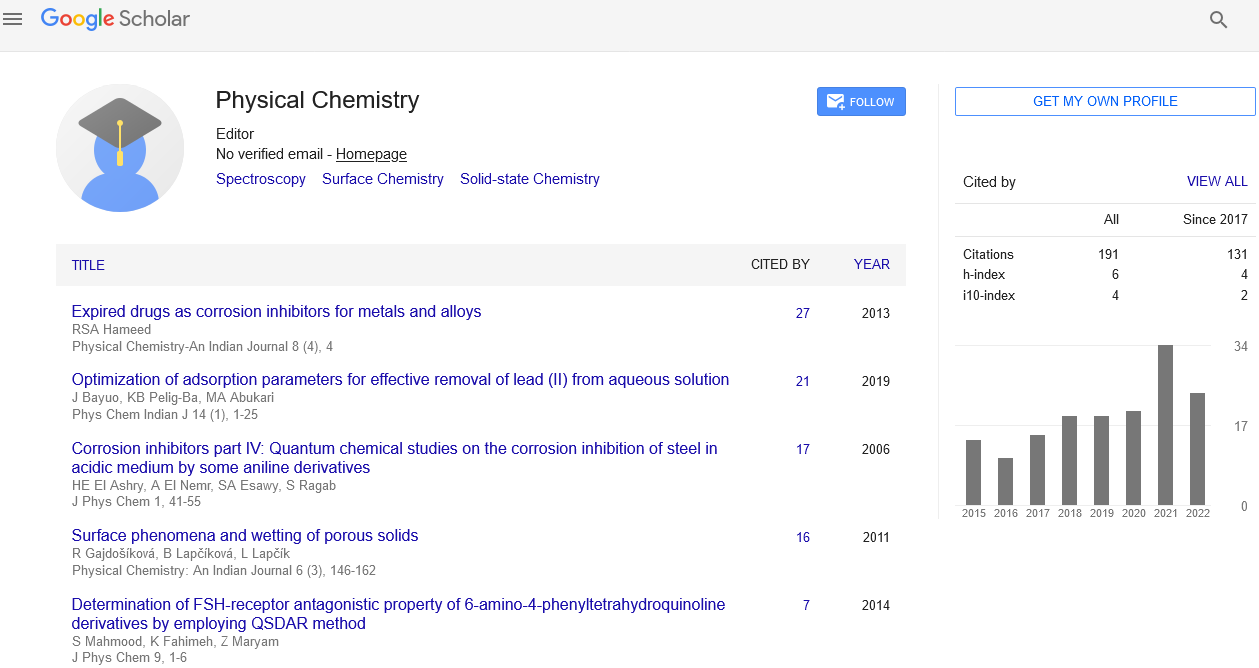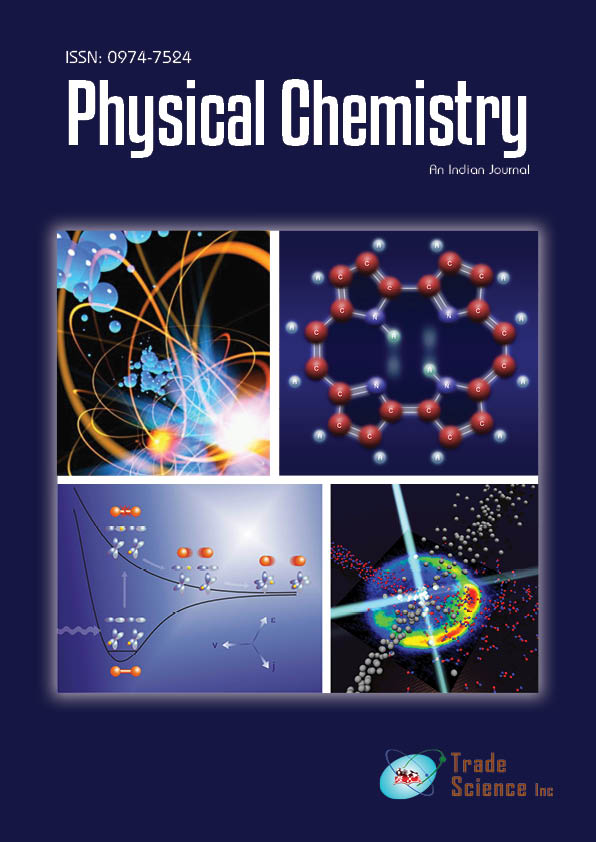Research
, Volume: 17( 2)Design and Syntheses of New Hydroxy Derivatives Derived from Cholic Acid
Cha Venkata Suryanarayana *
- *Correspondence:
- Cha Venkata Suryanarayana
Department of Research and Development,
Suryakala Laboratories Private Limited,
Karnataka, India,
E-mail: chvsurya@gmail.com
Received: March 31, 2021; Accepted: April 13, 2021; Published: April 20, 2021
Citation: Suryanarayana CV. Design and Syntheses of New Hydroxy Derivatives Derived from Cholic Acid. Phys Chem Ind J. 2021;16(3):145.
Abstract
First syntheses of three new hydroxy functionalized derivatives of cholic acid have been reported. We have applied first time well known Saegusa oxidation, Luche reduction and -hydroxylation (i.e., Vedejs reagent) for the syntheses of subjected cholic acid analogues.
Introduction
Steroids and their partial synthetic analogues well studied in medicinal chemistry. Bile acids (BAs) widely available natural products, have been extensively used for the preparation of receptors for various molecules and functionalized macrocylic host molecules. Also, have been used for the syntheses of antimicrobial agents. The biochemistry and physiology with the elegant supra molecular systems desired from bile acids well documented in the literature.4 A series of synthetic derivatives of 6-alkylated chenodeoxycholic acid (CDCA) exhibits various biological properties such as potential farnesoid-X receptor (FXR) ligands5 and potent and selective agonists of TGR5 [1].
Among the bile acids (BAs), cholic acid (ChA) has attracted significant attention primarily due to wide availability, relatively inexpensive, and the orientation of its three hydroxyl groups (i.e., C-3, C-7 , and C-12 ) on one face of the steroid nuclei. Synthetic analogues of cholic acid have been widely explored in different scientific areas such as combinatorial and supra molecular chemistry, various receptors syntheses,2as well as antimalarials and antiproliferatives. In addition, it has been used for the first synthesis of 3- oxa-5 -steroid. The literature reveals that, the biological activities of cholic acid derivatives depends on orientation of three hydroxyl groups. The all the synthetic analogues have been developed by performing fundamental organic reactions (i.e., reductions, oxidations, alkylation’s) at three hydroxyl groups as well as C-24 carboxylic acid group. In 2009, Pellicciari and co-workers6 identified the C-6- and C-23-alkylated cholic acid derivative as a novel and selective TGR5 agonist with remarkable in vivo activity. On the other hand, Saegusa oxidation extensively utilized for the conversion of enol silyl ethers to corresponding , -unsaturated ketones. Also, has been used in total synthesis of natural products. In addition, Luche reduction has been applied for stereo selective reduction of unsaturated ketones [2].
Furthermore, Vedejs reagent 12 (i.e., Oxodiperoxymolybdeenum (pyridine) (hexamethyphospotriamide) well know reagent for - hydroxylation of ketones as well as enol ethers. Herein, we first time successfully utilized “Saegusa oxidation” and “Vedejs reagent” for the syntheses of new cholic acid derivatives. In this communication, we describe our success on the first syntheses of new three cholic acid derivatives.
Methods
All reactions were carried out in oven-dried glassware (120 °C) under an atmosphere of nitrogen unless as indicated otherwise. Ethyl acetate and hexanes from GM fine chemicals were dried and distilled from CaH2. Diethyl ether and THF from GM fine chemicals were dried by distillation from sodium and benzophenone under an atmosphere of nitrogen. Acetonitrile, acetone, dichloromethane, and methanol were purchased from Avra labs. Boron trifluoride diethyl etherate (BF3·OEt2), Trimethyl silyl chloride (TMSCl), Palladium Acetate (Pd (OAc)2 and Cerium(III) chloride heptahydrate (CeCl3·7 H2O) were purchased from Aldrich Chemical Co [3].
Analytical thin layer chromatography (TLC) was performed on precoated plates (silica gel 60 F-254), which were purchased from Merck Inc. Purification by gravity column chromatography was carried out by use of Silicycle ultra pure silica gel (particle size 40–63 µm, 230–400 mesh). Infrared (IR) spectra were measured on a PerkinElmer model spectrum one B spectrophotometer. Absorption intensities are recorded by the following abbreviations: s, strong; m, medium; and w, weak. Proton NMR spectra were obtained on a Varian Mercury-400 (400 MHz) spectrometer by use of chloroform-d (CDCl3) and DMSO-d6 as solvents. Proton NMR chemical shifts are referenced to the CHCl3 singlet (7.24 ppm). Carbon-13 NMR spectra were obtained on a Varian Mercury-400 (100 MHz) spectrometer by used of chloroform-d as solvent. Carbon-13 chemical shifts are referenced to the center of the CDCl3 triplet (δ 77.0 ppm). Multiplicities are recorded by the following abbreviations: s, singlet; d, doublet; t, triplet; q, quartet; m, multiplet; J, coupling constant (hertz). A Perkin-Elmer 241 polarimeter with a sodium lamp was used for determination of specific rotations at room temperature. Melting points were obtained with a Fargo MP-2D melting point apparatus [4-6].
(R)-methyl4-((3R,10R,12S,13R,17R)-2,3,4,7,8,9,10,11,12,13,14,15,16,17tetradecahy-dro-3,12-dihydroxy-10,13-dimethyl-7- oxo-1H-cyclopenta[a]phenanthren-17-yl)pentanoate
To a solution containing compound 2 (3 g, 4.69mmol, 1.0 equiv) in dry acetonitrile (30 mL) was added Pd (OAc) 2 (3.16 g, 14.07mmol, 3.0 equiv). After the reaction mixture was stirred at room temperature for 16 h, the organic solvent completely distilled off and it was diluted with water and extracted with CH2Cl2 (3×15 mL). The combined organic layers were washed with saturated aqueous NaCl solution (15 mL), dried over MgSO4 (s), filtered, and concentrated under reduced pressure to afford a residue. Purification of the residue by chromatography with a silica gel column (27% EtOAc in hexane as the eluent) gave (3) (1.60 g, 3.82mmol) in 82% yield as a white solid.
TLC: Rf 0.2 (50% EtOAc in hexanes as the eluent);
1H NMR (DMSO, 300 MHz): 0.61 (s, 3 H, 21-CH3), 0.83-0.93 (m, 5 H), 1.11-1.29 (m, 10 H), 1.51-1.80 (m, 9 H), 2.15-2.27 (m, 5 H), 3.57 (s, 3 H, CO2CH3), 3.81 (s, 1 H), 3.97 (s, 1 H), 4.27 (d, J=3.9 Hz, 1 H), 4.45(d, J=2.7 Hz, 1 H), 5.50 (s, 1 H); 13C NMR (CDCl3, 300 MHz): 12.29, 16.51, 17.23, 25.64, 27.67, 28.02, 29.48, 30.78, 30.93, 31.78, 34.95, 38.26, 39.41, 41.07, 42.81, 45.17, 45.79, 46.34, 46.83, 51.30, 66.86, 71.66, 127.01, 174.58, 201.69);
IR (KBr); 1739.2 (s, COCH3), 1651.4 (s, C=O), 2927 cm-1;
MS (FAB): m/z calcd for 418.27, found 419.13 (M+H):
[α]25589 : -58.710°, C=0.62 in EtOH;
13C NMR (CDCl3, 300 MHz):12.64, 17.16, 18.16, 22.61, 24.19, 27.52, 29.03, 29.32, 30.78, 30.98, 33.99, 34.98, 35.74, 37.01, 40.32, 45.25, 45.96, 46.09, 46.34, 49.44, 51.38, 57.97, 70.50, 71.86, 174.67 (COCH3), 212.36 (C=O); IR (KBr); 1736.4 (s, COCH3), 1710.6 (s, C=O) cm-1;
(R)-methyl 4-((3R,7S,10R,12S,13R,17R)-2,3,4,7,8,9,10,11,12,13,14,15,16,17-tetradecahydro-3,7,12-trihydroxy-10,13- dimethyl-1H-cyclopenta[a]phenanthren-17-yl)pentanoate (4)
To a solution containing ketone 3 (500 mg 1.19mmol, 1.0 equiv) in Methanol (10 mL) was added NaBH4 (452 mg, 11.9mmol, 10.0 equiv) and CeCl3.7 H2O (1.34 g, 3.57mmol, 3.0 equiv). After the reaction mixture was stirred at room temperature for 24 h, it was quenched with aq NH4Cl solution and extracted with CH2Cl2 (3×15 mL). The combined organic layers were washed with saturated aqueous NaCl solution (15 mL), dried over MgSO4 (s), filtered, and concentrated under reduced pressure to afford a residue. Purification of the residue by chromatography with a silica gel column (35% EtOAc in hexane as the eluent) gave (4) (360 mg, 0.855mmol) in 72% yield as light brown solid.
TLC: Rf 0.1 (50% EtOAc in hexanes as the eluent);
1H NMR (DMSO, 300 MHz) ;0.61 (s, 3 H, 21-CH3), 0.80-0.85 (m, 2 H), 0.90-0.92 (m, 5 H), 1.14-1.19 (m, 4 H), 1.23-1.50 (m, 10 H), 1-90-1.98 (m, 2 H), 2.20-2.27 (m, 2 H), 2.32 (s, 1 H), 2.36 (s, 1 H), 3.57(s, 2 H), 3.79-3.85 (m, 2 H), 4.02 (m, J= 7.2 Hz, 3 H), 4.14 (d, J=4.5 Hz, 2 H), 5.05 (s, 1 H);
13C NMR (CDCl3, 300 MHz):12.50, 14.11, 17.24, 18.25, 20.72, 22.54, 26.63, 27.67, 29.21, 29.54, 30.81, 32.30, 34.61, 35.15, 36.52, 39.02, 39.28, 41.57, 46.24, 47.07, 127.16 , 141.24, 174.37;
IR (KBr); 1733.11 cm-1 (s, COCH3);
MS (FAB): m/z calcd for 420.27, found 421.15 (M+H);
.(R)-methyl4-((3R,5R,6R,10R,12S,13R,17R)-hexadecahydro-3,6,12-trihydroxy-10,13-dimethyl-7-oxo-1Hcyclopenta[a]phenanthren-17-yl)pentanoate
To a solution containing Compound 2 (500 mg 0.782mmol, 1.0 equiv) in CH2Cl2 (10 mL) was added MoOPH (221.8 mg, 1.173mmol, 1.5 equiv) and boron trifluoride diethyl etherate (166.4 mg, 1.173mmol, 1.5 equiv) After the reaction mixture was stirred at room temperature for 16 h, it was quenched with aq sat NaHCO3 solution and extracted with CH2Cl2 (3×15 mL). The combined organic layers were washed with saturated aqueous NaCl solution (15 mL), dried over MgSO4 (s), filtered, and concentrated under reduced pressure to afford a residue. Purification of the residue by chromatography with a silica gel column (35% EtOAc in hexane as the eluent) gave (5) (352 mg, 0.806 mmol) in 68% yield as pale brown solid. TLC: Rf 0.1 (50% EtOAc in hexanes as the eluent);
1H NMR (DMSO, 300 MHz): 0.570 (s, 3 H, 21-CH3), 0.81-1.05 (m, 10 H), 1.20-1.45 (m, 6 H), 1.45-1.95 (m, 9 H), 1.98- 2.41 (m, 7 H), 2.85 (dd, 5-CH, J=6.0 Hz, 1 H), 3.55 (s, 3 H, CO2CH3), 3.78 (d, 1 H, 12CH-OH), 4.29 (d, J=8.4 Hz, 1 H, 3CHOH), 4.483 (d, J=8.4 Hz, 1 H, 6CH-OH);
[α]25589 :+3.3330 , C=0.6 in EtOH;
MS (FAB): m/z calcd for 436.28, found 437.42 (M+H);
Results and Discussion
Our synthesis commenced with commercially available cholic acid , which can be converted into silylated enol ether intermediate 26b in three steps by Pellicciari’s6b procedure (Fig.1.). Saegusa oxidation9 of silylated enol ether with palladium acetate in dry acetonitrile at room temperature for 16 h provided , -unsaturated ketone in 82% yield. This compound exhibited characteristic singlet at 5.50 ppm in its 1H NMR spectrum corresponds to the olefinic proton of -double bond. In its 13C NMR spectrum, resonance occurred at δ 127.01 and δ 174.58 ppm for the , -unsaturated , -unsaturated ketone motif. Moreover, its exact mass was detected as 419.13, which well agreed to the theoretical value 418.27 for C25H38O5. These spectroscopic data clearly confirm the formation of , -unsaturated ketone . Then, reduction of compound (3) with (NaBH4, CeCl3.7 H2O) in methanol at room temperature afforded the dihydro cholic acid derivative as light brown solid in 72% yield. We have confirmed the formation of compound by presence of characteristic singlet at δ 5.05 ppm in its 1H NMR spectrum for C5=C6 double bond. The resultant double bond in compound can be further functionalized to cispolyhydroxy derivatives of cholic acid by dihydroxylation with OsO4.13 [7-10].
Our next stage was to introduce hydroxy group at C-6 position of the cholic acid. As shown in Scheme 2, -hydroxylation of silylated enol ether 2 with chromyl chloride14 in dichloromethane at room temperature for 16 h provided hydroxy ketone (5) in 25% yield. On the other hand, same reaction repeated with oxygen (O2) 15 balloon in water yielded compound (5) in only 40% yields (Fig.2.). Then, by employing Vedejs reagent (MoOPH) in the presence of boron trifluoride diethyl etherate allowed us to improve the yield to 68%. The new compound has been characterized with all spectral data.
Conclusion
In conclusion, we accomplished the first synthesis of dihydro cholic acid derivative in 5 steps from commercially available cholic acid. The well known Saegusa oxidation, Luche reductions were utilized for the synthesis of dihydro cholic acid. In addition, we make use of Vedejs reagent (MoOPH) for preparation of hydroxy ketone.
Acknowledgements
We are grateful to the management of Suryakala laboratories private limited for giving support to carry out this work. We are also appreciative to the colleagues of PR and D and analytical departments for their cooperation.

